- Our Catalog
- Philosophy
- Philosophers of the 20th century and today
- History of Philosophy (PUF)
- Counter-History and Brief Encyclopedia by Michel Onfray
- The philosophical work explained by Luc Ferry
- Ancient thought
- Thinkers of yesterday as seen by the philosophers of today
- Historical philosophical texts interpreted by great actors
- History
- Books (in French)
- Social science
- Historical words
- Audiobooks & Literature
- Our Catalog
- Jazz
- Blues
- Rock - Country - Cajun
- French song
- World music
- Africa
- France
- Québec / Canada
- Hawaï
- West Indies
- Caribbean
- Cuba & Afro-cubain
- Mexico
- South America
- Tango
- Brazil
- Tzigane / Gypsy
- Fado / Portugal
- Flamenco / Spain
- Yiddish / Israel
- China
- Tibet / Nepal
- Asia
- Indian Ocean / Madagascar
- Japan
- Indonesia
- Oceania
- India
- Bangladesh
- USSR / Communist songs
- World music / Miscellaneous
- Classical music
- Composers - Movie Soundtracks
- Sounds of nature
- Our Catalog
- Youth
- Philosophy
- News
- How to order ?
- Receive the catalog
- Manifesto
- Dictionnary











- Our Catalog
- Philosophy
- Philosophers of the 20th century and today
- History of Philosophy (PUF)
- Counter-History and Brief Encyclopedia by Michel Onfray
- The philosophical work explained by Luc Ferry
- Ancient thought
- Thinkers of yesterday as seen by the philosophers of today
- Historical philosophical texts interpreted by great actors
- History
- Books (in French)
- Social science
- Historical words
- Audiobooks & Literature
- Our Catalog
- Jazz
- Blues
- Rock - Country - Cajun
- French song
- World music
- Africa
- France
- Québec / Canada
- Hawaï
- West Indies
- Caribbean
- Cuba & Afro-cubain
- Mexico
- South America
- Tango
- Brazil
- Tzigane / Gypsy
- Fado / Portugal
- Flamenco / Spain
- Yiddish / Israel
- China
- Tibet / Nepal
- Asia
- Indian Ocean / Madagascar
- Japan
- Indonesia
- Oceania
- India
- Bangladesh
- USSR / Communist songs
- World music / Miscellaneous
- Classical music
- Composers - Movie Soundtracks
- Sounds of nature
- Our Catalog
- Youth
- Philosophy
- News
- How to order ?
- Receive the catalog
- Manifesto
- Dictionnary
Roots of Soul - Remastered
RAY CHARLES, FATS DOMINO, NINA SIMONE
Réf. : FA5829 / FA5692 / FA5807
Artistic Direction : JOEL DUFOUR , BRUNO BLUM , OLIVIER JULIEN
Label : Frémeaux & Associés
Total duration of the pack : 13 hours 54 minutes
Nbre. CD : 14
- -
- -
- -
- - Recommandé par France Musique
Les monuments du Rhythm & Blues et du rock, piliers fondateurs de la soul music en 14 CD.
The ABC - Paramount Years 1959-1962
In 1959-1962, Ray Charles’s career was in the heavens, and this definitive set prepared by Joël Dufour draws on the most intense period of Ray’s recordings. The ability of “The Genius” to produce new things artistically could no longer be judged by the same standards, with Ray showing rare eclecticism. Expressing his talents without reserve, he delivered his greatest hits, from “Georgia on My Mind” to “Hit The Road Jack” and “Unchain My Heart”… The titles here are precious evidence of the period when a very gifted rhythm & blues artist transformed into the eternal idol of pop.
Patrick FRÉMEAUX
CD1 : THEM THAT GOT • WHO YOU GONNA LOVE • MY BABY (I LOVE HER, YES I DO) • GEORGIA ON MY MIND • MOONLIGHT IN VERMONT • MOON OVER MIAMI • BLUE HAWAII • CHATTANOOGA CHOO CHOO • BASIN STREET BLUES • DEEP IN THE HEART OF TEXAS • MISSISSIPPI MUD • ALABAMY BOUND • CALIFORNIA HERE I COME • NEW YORK’S MY HOME • CARRY ME BACK TO OLD VIRGINNY • I WONDER (SINGLE VERSION) • STICKS AND STONES • WORRIED LIFE BLUES • NANCY • RUBY • STELLA BY STARLIGHT • CHERRY • CANDY • DIANE.
CD2 : MARGIE • SWEET GEORGIA BROWN • HARD HEARTED HANNAH • ROSETTA • MARIE • JOSEPHINE • MOANIN’ • STRIKE UP THE BAND • FROM THE HEART • STOMPIN’ ROOM ONLY • MISTER C • I’VE GOT NEWS FOR YOU • THE BIRTH OF THE BLUES • ONE MINT JULEP • I’M GONNA MOVE TO THE OUTSKIRTS OF TOWN • LET’S GO • INTRO: GOODBYE WE’LL BE TOGETHER AGAIN • ALONE TOGETHER • EV’RY TIME WE SAY GOODBYE • FOR ALL WE KNOW • COCKTAILS FOR TWO.
CD3 : YOU AND I • TAKES TWO TO TANGO • SIDE BY SIDE • BABY IT’S COLD OUTSIDE • TOGETHER • PEOPLE WILL SAY WE’RE IN LOVE • JUST YOU JUST ME • UNCHAIN MY HEART (SINGLE & MONO LP VERSION) • HIT THE ROAD JACK • THE DANGER ZONE • BUT ON THE OTHER HAND BABY • BYE BYE LOVE • CARELESS LOVE • HEY GOOD LOOKIN’ • HALF AS MUCH • JUST A LITTLE LOVIN’ • IT MAKES NO DIFFERENCE NOW • AT THE CLUB • HIDE NOR HAIR.
CD4 : I LOVE YOU SO MUCH IT HURTS • YOU DON’T KNOW ME • I CAN’T STOP LOVING YOU • BORN TO LOSE • YOU WIN AGAIN • WORRIED MIND • YOU ARE MY SUNSHINE • MIDNIGHT • SOMEDAY (YOU’LL WANT ME TO WANT YOU) • DON’T TELL ME YOUR TROUBLES • OH LONESOME ME • NO LETTER TODAY • YOUR CHEATING HEART • MAKING BELIEVE • I’LL NEVER STAND IN YOUR WAY • TAKE THESE CHAINS FROM MY HEART • HANG YOUR HEAD IN SHAME • TEARDROPS IN MY HEART • I WONDER (ALTERNATE TAKE: LP VERSION) • UNCHAIN MY HEART (ALTERNATE TAKE: STEREO LP VERSION) *BONUS TRACK (ON CD FOR THE FIRST TIME): GOING TO THE RIVER (ALTERNATE TAKE OF “MISERY IN MY HEART”).
DIRECTION ARTISTIQUE : JOËL DUFOUR
It is out of New Orleans that Fats Domino surged up to become the greatest black star of the 1950s and the first true rock superstar — a giant among giants. His worldwide hits, such as “Blueberry Hill,” became so famous that they overshadowed the best of his excellent output. Yet one should not overlook the great blues performer, the Boogie Woogie piano virtuoso and the fundamental pioneer who let the world first discover the rock genre. Domino managed to cross over to the white, general public, and embodied racial segregation tensions during the early Civil Rights movement. Bruno Blum tells the unthinkable triumph of this simple man who, far from his smiling image, caused riots all over the country. There is no way around these six discs, which are indispensable to any rock or blues lover. This hand-picked selection highlights the cream of often overlooked works by an essential figure. — PATRICK FRÉMEAUX
Her deep voice and the funky sophistication of her piano have made Nina Simone a timeless icon of American music. Her extreme sensitivity as a militant artist in the struggle for civil rights was matched only by her unrivalled talent as a vocalist and instrumentalist: nobody could come close to her when she infused jazz with soul, or classical music with rhythm and blues. Here Olivier Julien has brought together a complete set of Nina Simone’s effervescent recordings from her early period, featuring a great number of her hits including the emblematic “My Baby just Cares for Me”.
Patrick Frémeaux
CD 1 : MOOD INDIGO • DON’T SMOKE IN BED • HE NEEDS ME • LITTLE GIRL BLUE • LOVE ME OR LEAVE ME • MY BABY JUST CARES FOR ME • GOOD BAIT • PLAIN GOLD RINGFREMEAUX264YOU’LL NEVER WALK ALONE • I LOVES YOU PORGY • CENTRAL PARK BLUES • BLUE PRELUDE • CHILDREN GO WHERE I SEND YOU • TOMORROW (WE WILL MEET ONCE MORE) • STOMPIN’ AT THE SAVOY • IT MIGHT AS WELL BE SPRING • YOU’VE BEEN GONE TOO LONG • THAT’S HIM OVER THERE • CHILLY WINDS DON’T BLOW • THEME FROM “MIDDLE OF THE NIGHT” • CAN’T GET OUT OF THIS MOOD • WILLOW WEEP FOR ME • SOLITAIRE.
CD 2 : BLACK IS THE COLOR OF MY TRUE LOVE’S HAIR • EXACTLY LIKE YOU • THE OTHER WOMAN • UNDER THE LOWEST • YOU CAN HAVE HIM • SUMMERTIME • SUMMERTIME (VOCAL) • COTTON EYED JOE • RETURN HOME • WILD IS THE WIND • FINE AND MELLOW • DO NOTHIN’ TILL YOU HEAR FROM ME • I GOT IT BAD • HEY, BUDDY BOLDEN • MERRY MENDING • SOMETHING TO LIVE FOR • YOU BETTER KNOW IT • I LIKE THE SUNRISE • SOLITUDE • THE GAL FROM JOE’S • SATIN DOLL • IT DON’T MEAN A THING.
CD3 : TROUBLE IN MIND • BLUES FOR PORGY • LITTLE LIZA JANE • YOU’D BE SO NICE TO COME HOME TO • FLO ME LA • NINA’S BLUES • IN THE EVENING BY THE MOONLIGHT • RAGS AND OLD IRON • NO GOOD MAN • GIN HOUSE BLUES • I’LL LOOK AROUND • I LOVE TO LOVE • WORK SONG • WHERE CAN I GO WITHOUT YOU • JUST SAY I LOVE HIM (ENGLISH VERSION) • MEMPHIS IN JUNE • FORBIDDEN FRUIT.
CD4 : JUST IN TIME • HE WAS TOO GOOD TO ME • HOUSE OF THE RISING SUN • BYE BYE BLACKBIRD • BROWN BABY • ZUNGO • IF HE CHANGED MY NAME • CHILDREN GO WHERE I SEND YOU • AFRICAN MAILMAN • FOR ALL WE KNOW • HE’S GOT THE WHOLE WORLD IN HIS HANDS • IF ONLY FOR TONIGHT • NOBODY KNOWS YOU • WHEN YOU’RE DOWN AND OUT • COME ON BACK, JACK • I WANT A LITTLE SUGAR IN MY BOWL.
DIRECTION ARTISTIQUE : OLIVIER JULIEN
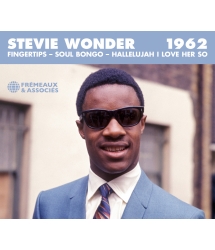
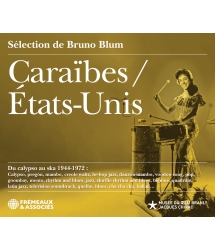
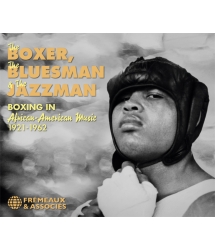
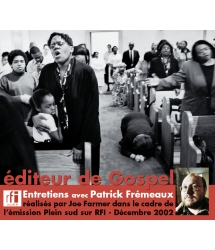
-
PisteTitleMain artistAutorDurationRegistered in
-
1Them That GotRay CharlesHarper Ricci00:02:541959
-
2Who You Gonna LoveRay CharlesRay Charles00:02:061959
-
3My Baby (I Love Her Yes I Do)Ray CharlesRay Charles00:03:031959
-
4Georgia On My MindRay CharlesHoagy Carmichael00:03:351960
-
5Moonlight in VermontRay CharlesBlackburn00:03:021960
-
6Moon Over MiamiRay CharlesEdgar Leslie00:03:201960
-
7Blue HawaiiRay CharlesLeo Robin00:02:581960
-
8Chattanooga Choo ChooRay CharlesGordon Mack00:03:051960
-
9Basin' Street BluesRay CharlesSpencer Williams00:02:461960
-
10Deep in The Heart of TexasRay CharlesJune Hershey00:02:281960
-
11Mississippi MudRay CharlesCavanaugh00:03:241960
-
12Alabamy BoundRay CharlesBuddy Desylva00:01:551960
-
13California Here I ComeRay CharlesBuddy Desylva00:02:101960
-
14New York's My HomeRay CharlesGordon Jenkins00:03:051960
-
15Carry Me Back To Old VirginnyRay CharlesJames Bland00:02:021960
-
16I Wonder (Single Version)Ray CharlesCecil Gant00:02:361960
-
17Sticks And StonesRay CharlesTitus Turner00:02:131960
-
18Worried Life BluesRay CharlesMajor Merriweather00:03:101960
-
19NancyRay CharlesSilvers00:03:061960
-
20RubyRay CharlesMitchell Parish00:03:541960
-
21Stella by StarlightRay CharlesNed Washington00:03:501960
-
22CherryRay CharlesGilbert00:03:371960
-
23CandyRay CharlesMack Davis00:04:091960
-
24DianeRay CharlesErno Rapee00:03:511960
-
PisteTitleMain artistAutorDurationRegistered in
-
1MargieRay CharlesCon Conrad00:02:471960
-
2Sweet Georgia BrownRay CharlesBen Bernie00:03:301960
-
3Hard Hearted HannahRay CharlesYellen00:03:181960
-
4RosettaRay CharlesEarl Hines00:02:331960
-
5MarieRay CharlesIrving Berlin00:02:211960
-
6JosephineRay CharlesGus Kahn00:02:141960
-
7Moanin'Ray CharlesBobby Timmons00:03:211960
-
8Strike up The BandRay CharlesGershwin George & Ira00:02:391960
-
9From The HeartRay CharlesRay Charles00:03:391960
-
10Stompin' Room OnlyRay CharlesHoward Marks00:03:481960
-
11Mister CRay CharlesRay Charles00:04:331960
-
12I've Got News For YouRay CharlesRoy Alfred00:04:321960
-
13The Birth of The BluesRay CharlesDesylva00:05:161960
-
14One Mint JulepRay CharlesRudolph Toombs00:03:091960
-
15I'm Gonna Move to The Outskirts of TownRay CharlesJacobs00:03:461960
-
16Let's GoRay CharlesRay Charles00:02:431960
-
17Intro: Goodbye We'll Be Together AgainRay CharlesFrankie Laine00:03:211961
-
18Alone TogetherRay CharlesHoward Dietz00:04:471961
-
19Ev'ry Time We Say GoodbyeRay CharlesCole Porter00:04:411961
-
20For All We KnowRay CharlesLewis00:03:451961
-
21Cocktails For TwoRay CharlesSam Coslow00:03:161961
-
PisteTitleMain artistAutorDurationRegistered in
-
1You And IRay CharlesMeredith Wilson00:03:291961
-
2Takes Two to TangoRay CharlesAl Hoffman00:03:241961
-
3Side by SideRay CharlesHarry Woods00:02:231961
-
4Baby It's Cold OutsideRay CharlesFrank Loesser00:04:121961
-
5TogetherRay CharlesDesylva00:01:361961
-
6People Will Say We're in LoveRay CharlesRichard Rodgers00:02:531961
-
7Just You Just MeRay CharlesRaymond Klages00:02:001961
-
8Unchain My HeartRay CharlesBobby Sharp00:02:511961
-
9Hit The Road JackRay CharlesPercy Mayfield00:02:001961
-
10The Danger ZoneRay CharlesPercy Mayfield00:02:241961
-
11But on The Other Hand BabyRay CharlesPercy Mayfield00:03:151961
-
12Bye Bye LoveRay CharlesFelice Bryant00:02:131962
-
13Careless LoveRay CharlesRay Charles00:03:591962
-
14Hey Good Lookin'Ray CharlesHank Williams00:02:121962
-
15Half as MuchRay CharlesHank Williams00:03:261962
-
16Just a Little Lovin'Ray CharlesZeke Clements00:03:281962
-
17It Makes no Difference NowRay CharlesJimmie Davis00:03:341962
-
18At The ClubRay CharlesPercy Mayfield00:03:011962
-
19Hide Nor HairRay CharlesPercy Mayfield00:03:121962
-
PisteTitleMain artistAutorDurationRegistered in
-
1Love You so Much It HurtsRay CharlesFloyd Tillman00:03:341962
-
2You Don't Know MeRay CharlesCindy Walker00:03:141962
-
3I Can't Stop Loving YouRay CharlesDon Gibson00:04:131962
-
4Born To LoseRay CharlesFrankie Brown00:03:151962
-
5You Win AgainRay CharlesHank Williams00:03:151962
-
6Worried MindRay CharlesJimmie Davis00:02:551962
-
7You Are My SunshineRay CharlesJimmie Davis00:03:011962
-
8MidnightRay CharlesBoudleaux Bryant00:03:161962
-
9Someday (You'll Want Me to Want You)Ray CharlesJohnny Hodges00:02:401962
-
10Don't Tell Me Your TroublesRay CharlesDon Gibson00:02:071962
-
11Oh Lonesome MeRay CharlesDon Gibson00:02:101962
-
12No Letter TodayRay CharlesFrankie Brown00:03:001962
-
13Your Cheating HeartRay CharlesHank Williams00:03:341962
-
14Making BelieveRay CharlesLilian Schwope00:02:531962
-
15I 'll Never Stand in Your WayRay CharlesFred Rose00:02:191962
-
16Take These Chains From My HeartRay CharlesFred Rose00:02:561962
-
17Hang Your Head in ShameRay CharlesFred Rose00:03:161962
-
18Teardrops in My HeartRay CharlesVaughn Horton00:03:031962
-
19I Wonder (Alternate Take: LP Version)Ray CharlesCecil Gant00:02:311960
-
20Unchain My Heart (Alternate Take: Stereo LP Version)Ray CharlesBobby Sharp00:02:511961
-
21Going to The River (Alternate Take of “Misery in My Heart”)Ray CharlesBoyd00:03:021951
-
PisteTitleMain artistAutorDurationRegistered in
-
1The Fat ManFats DominoFats Domino00:02:371949
-
2Hide Away BluesFats DominoFats Domino00:02:241949
-
3She's My BabyFats DominoFats Domino00:02:401949
-
4Little BeeFats DominoDave Bartholomew00:02:281950
-
5Boogie Woogie BabyFats DominoDave Bartholomew00:02:161950
-
6Hey ! Là-Bas BoogieFats DominoDave Bartholomew00:02:241950
-
7Careless LoveFats DominoW.C. Handy00:02:151950
-
8Hey! Fat ManFats DominoFats Domino00:02:351950
-
9What's The Matter BabyFats DominoFats Domino00:02:131951
-
10I'Ve Got Eyes For YouFats DominoFats Domino00:02:381951
-
11Stay AwayFats DominoFats Domino00:02:131951
-
12Don'T You Lie To MeFats DominoTampa Red00:02:181951
-
13Rockin' ChairFats DominoFats Domino00:02:271951
-
14Sometimes I WonderFats DominoFats Domino00:02:211951
-
15Right From WrongFats DominoFats Domino00:02:141951
-
16You Know I Miss YouFats DominoFats Domino00:02:131951
-
17I'll Be GoneFats DominoFats Domino00:02:191951
-
18Reeling And RockingFats DominoFats Domino00:02:191952
-
19Goin' HomeFats DominoFats Domino00:02:101952
-
20How LongFats DominoFats Domino00:02:011952
-
PisteTitleMain artistAutorDurationRegistered in
-
1No No BabyFats DominoFats Domino00:02:191951
-
2The Fat Man's HopFats DominoFats Domino00:02:251951
-
3Long Lonesome JourneyFats DominoFats Domino00:02:271952
-
4Trust In MeFats DominoFats Domino00:02:481952
-
5Cheatin'Fats DominoFats Domino00:02:361952
-
6Mardi Gras In New OrleansFats DominoProfessor Longhair00:02:171952
-
7I Guess I'll Be On My WayFats DominoFats Domino00:02:171952
-
8Nobody Loves MeFats DominoFats Domino00:02:121952
-
9DreamingFats DominoDave Bartholomew00:02:191952
-
10Going To The RiverFats DominoDave Bartholomew00:02:291953
-
11I Love HerFats DominoDave Bartholomew00:02:041953
-
12Second Line JumpFats DominoDave Bartholomew00:02:321953
-
13Swanee River HopFats DominoDave Bartholomew00:02:461953
-
14Rosemary Version 1Fats DominoDave Bartholomew00:02:001953
-
15Please Don't Leave MeFats DominoFats Domino00:02:341953
-
16Domino StompFats DominoFats Domino00:01:551953
-
17You Said You Love MeFats DominoFats Domino00:02:341953
-
18Rose Mary Version 2Fats DominoFats Domino00:02:151953
-
19Ain'T It GoodFats DominoFats Domino00:02:361953
-
20Fats Domino Blues (Instrumental)Fats DominoFats Domino00:02:251953
-
PisteTitleMain artistAutorDurationRegistered in
-
1The Girl I LoveFats DominoFats Domino00:02:061953
-
2Don'T Leave Me This WayFats DominoFats Domino00:02:181953
-
3Something's WrongFats DominoFats Domino00:02:411953
-
4Fat's Frenzy (Instrumental)Fats DominoFats Domino00:02:231953
-
5Goin' Back HomeFats DominoFats Domino00:01:551953
-
6You Left MeFats DominoFats Domino00:02:031953
-
7“44”Fats DominoFats Domino00:02:291953
-
8Barrel HouseFats DominoFats Domino00:02:291953
-
9Little School GirlFats DominoFats Domino00:02:381953
-
10If You Need MeFats DominoFats Domino00:02:031953
-
11You Done Me WrongFats DominoFats Domino00:02:031953
-
12Baby PleaseFats DominoFats Domino00:01:561954
-
13Where Did You StayFats DominoFats Domino00:02:011954
-
14I Lived My LifeFats DominoFats Domino00:01:591954
-
15Little MamaFats DominoFats Domino00:02:391954
-
16I KnowFats DominoFats Domino00:02:381954
-
17Love MeFats DominoFats Domino00:01:551954
-
18Don'T You Hear Me Calling YouFats DominoFats Domino00:02:071954
-
19Don'T You NowFats DominoFats Domino00:02:201955
-
20Helping HandFats DominoFats Domino00:02:061955
-
PisteTitleMain artistAutorDurationRegistered in
-
1All By MyselfFats DominoFats Domino00:02:221955
-
2Ain'T That A ShameFats DominoFats Domino00:02:251955
-
3La LaFats DominoFats Domino00:02:131955
-
4Blue MondayFats DominoFats Domino00:02:161955
-
5Troubles Of My OwnFats DominoFats Domino00:02:131955
-
6I'M In Love AgainFats DominoFats Domino00:01:541955
-
7Bo WeevilFats DominoFats Domino00:02:471955
-
8Don'T Blame It On MeFats DominoFats Domino00:02:411955
-
9If You Need Me 2Fats DominoFats Domino00:02:021955
-
10Howdy PodnerFats DominoFats Domino00:02:081955
-
11So LongFats DominoFats Domino00:02:111955
-
12I Can'T Go On This WayFats DominoTerry Hall00:02:101955
-
13My Blue HeavenFats DominoA. Whiting00:02:061955
-
14Ida JaneFats DominoFats Domino00:02:091956
-
15When My Dreamboat Comes HomeFats DominoCliff Friend00:02:191956
-
16What's The Reason Why I'M Not Pleasing YouFats DominoEarl Hatch00:02:011956
-
17The Twist Set Me FreeFats DominoFats Domino00:02:001956
-
18Blueberry HillFats DominoVincent Rose00:02:191956
-
19Honey ChileFats DominoFats Domino00:01:461956
-
20What Will I Tell My HeartFats DominoP. Tinturin00:02:261957
-
PisteTitleMain artistAutorDurationRegistered in
-
1I'M Walkin'Fats DominoFats Domino00:02:091957
-
2I'M In The Mood For LoveFats DominoJimmy McHugh00:02:421957
-
3My HappinessFats DominoBergantino Biagio00:02:141957
-
4Don'T Deceive MeFats DominoFats Domino00:01:521957
-
5The Rooster SongFats DominoFats Domino00:02:051957
-
6Oh! WheeFats DominoFats Domino00:02:061957
-
7My Love For HerFats DominoFats Domino00:02:371957
-
8Don't You Know That I Love YouFats DominoFats Domino00:02:091958
-
9(I'll Be Glad When You Re Dead) You Rascal YouFats DominoTheard Sam00:02:361958
-
10Young School GirlFats DominoFats Domino00:01:541958
-
11Lazy WomanFats DominoFats Domino00:01:471958
-
12Whole Lotta LovingFats DominoFats Domino00:01:381958
-
13Lil Liza JaneFats DominoDave Bartholomew00:01:521958
-
14When The Saints Go Marching InFats DominoInconnu00:02:251958
-
15I'M ReadyFats DominoFats Domino00:02:031959
-
16Want To Walk You HomeFats DominoFats Domino00:02:191959
-
17Easter ParadeFats DominoIrving Berlin00:02:261959
-
18Be My GuestFats DominoFats Domino00:02:151959
-
19Walking To New OrleansFats DominoFats Domino00:01:591959
-
20Don'T Come Knockin'Fats DominoFats Domino00:01:571959
-
PisteTitleMain artistAutorDurationRegistered in
-
1La La 2Fats DominoFats Domino00:02:021959
-
2Shu RahFats DominoFats Domino00:01:401960
-
3My Girl JosephineFats DominoFats Domino00:02:021960
-
4It Keeps Rainin'Fats DominoFats Domino00:02:461960
-
5What A PriceFats DominoFats Domino00:02:211960
-
6Ain'T That Just Like A WomanFats DominoClaude Demetrius00:02:431960
-
7Fell In Love On MondayFats DominoFats Domino00:01:551960
-
8Trouble In MindFats DominoMarigny Jones Richard00:02:301961
-
9Bad Luck And TroubleFats DominoFats Domino00:02:401961
-
10I Just CryFats DominoFats Domino00:02:061961
-
11Ain'T Gonna Do ItFats DominoFats Domino00:02:041961
-
12Won'T You Come On BackFats DominoFats Domino00:02:181961
-
13Good Hearted ManFats DominoFats Domino00:02:241961
-
14Trouble BluesFats DominoCharles Brown00:02:411961
-
15Let The Four Winds BlowFats DominoTraditionnel00:02:171961
-
16What A PartyFats DominoFats Domino00:01:591961
-
17Jambalaya (On The Bayou)Fats DominoHank Williams00:02:221961
-
18Stop The ClockFats DominoFats Domino00:02:191962
-
19Hum Diddy DooFats DominoFats Domino00:01:541962
-
20Dance With Mr. DominoFats DominoFats Domino00:02:041962
-
PisteTitleMain artistAutorDurationRegistered in
-
1Mood IndigoNina SimoneDuke Ellington00:04:001959
-
2Don' Smoke In BedNina SimoneWilliam Robison00:03:101959
-
3He Needs MeNina SimoneArthur Hamilton00:02:291959
-
4Little Girl BlueNina SimoneRichard Rodgers00:04:161959
-
5Love Me Or Leave MeNina SimoneWalter Donaldson00:03:201959
-
6My Baby Just Cares For MeNina SimoneWalter Donaldson00:03:351959
-
7Good BaitNina SimoneTadd Dameron00:05:261959
-
8Plain Gold RingNina SimoneEarl Burroughs00:03:461959
-
9You'll Never Walk AloneNina SimoneRichard Rodgers00:03:441959
-
10Loves You PorgyNina SimoneHeyward Dubose00:04:081959
-
11Central Park BluesNina SimoneNina Simone00:06:491959
-
12Blue PreludeNina SimoneBishop00:03:211959
-
13Children Go Where I Send YouNina SimoneNina Simone00:02:521959
-
14Tomorrow (We Will Meet Once More)Nina SimoneGale00:03:011959
-
15Stompin' At The SavoyNina SimoneBenny Goodman00:02:081959
-
16It Might As Well Be SpringNina SimoneOscar Hammerstein II00:03:551959
-
17You Ve Been Gone Too LongNina SimoneJohn Sellers00:02:111959
-
18That's Him Over ThereNina SimoneMarilyn Keith00:02:311959
-
19Chilly Winds Don't BlowNina SimoneHecky Krasnox00:02:471959
-
20Theme From “Middle Of The Night”Nina SimoneGeorge Bassman00:02:301959
-
21Can't Get Out Of This MoodNina SimoneFrank Loesser00:02:331959
-
22Willow Weep For MeNina SimoneRonell00:03:131959
-
23SolitaireNina SimoneRenée Borek00:03:241959
-
PisteTitleMain artistAutorDurationRegistered in
-
1Black Is The Color Of My True Love's HairNina SimoneTraditionnel00:03:311959
-
2Exactly Like YouNina SimoneJimmy McHugh00:03:141959
-
3The Other WomanNina SimoneNina Simone00:02:591959
-
4Under The LowestNina SimoneNina Simone00:05:331959
-
5You Can Have HimNina SimoneDavid Enloe00:05:531959
-
6SummertimeNina SimoneGeorge et Ira Gershwin00:02:531959
-
7Summertime (Vocal)Nina SimoneGeorge et Ira Gershwin00:02:471959
-
8Cotton Eyed JoeNina SimoneTraditionnel00:02:561959
-
9Return HomeNina SimoneNina Simone00:05:271959
-
10Wild Is The WindNina SimoneDimitri Tiomkin00:03:371959
-
11Fine And MellowNina SimoneBillie Holiday00:03:271959
-
12Do Nothin' Till You Hear From MeNina SimoneBob Russell00:02:491962
-
13Got It BadNina SimoneBen Webster00:04:051962
-
14Hey, Buddy BoldenNina SimoneDuke Ellington00:02:261962
-
15Merry MendingNina SimoneDuke Ellington00:02:341962
-
16Something To Live ForNina SimoneDuke Ellington00:02:561962
-
17You Better Know ItNina SimoneDuke Ellington00:02:241962
-
18I'll Like The SunriseNina SimoneDuke Ellington00:02:591962
-
19SolitudeNina SimoneDuke Ellington00:03:441962
-
20The Gal From Joe'sNina SimoneDuke Ellington00:02:121962
-
21Satin DollNina SimoneDuke Ellington00:03:361962
-
22It Don't Mean A ThingNina SimoneDuke Ellington00:02:331962
-
PisteTitleMain artistAutorDurationRegistered in
-
1Trouble In MindNina SimoneRichard Jones00:05:411960
-
2Blues For PorgyNina SimoneGeorge Gershwin00:05:111960
-
3Little Liza JaneNina SimoneTraditionnel00:04:331960
-
4You'd Be So Nice To Come Home ToNina SimoneCole Porter00:05:231960
-
5Flo Me LaNina SimoneTraditionnel00:07:121960
-
6Nina's BluesNina SimoneNina Simone00:06:111960
-
7In The Evening By The MoonlightNina SimoneJames Bland00:06:141960
-
8Rags And Old IronNina SimoneNorman Curtis00:04:081961
-
9No Good ManNina SimoneDan Fisher00:03:371961
-
10Gin House BluesNina SimoneFletcher Henderson00:03:021961
-
11I'll Look AroundNina SimoneDouglass Cross00:05:021961
-
12I Love To LoveNina SimoneHerbie Baker00:03:221961
-
13Work SongNina SimoneOscar Brown00:02:331961
-
14Where Can I Go Without YouNina SimoneLee Peggy00:02:501961
-
15Just Say I Love Him (English Version)Nina SimoneVal00:06:331961
-
16Memphis In JuneNina SimonePaul Francis Webster00:02:371961
-
17Forbidden FruitNina SimoneOscar Brown00:03:461961
-
PisteTitleMain artistAutorDurationRegistered in
-
1Just In TimeNina SimoneBetty Comden00:06:361962
-
2He Was Too Good To MeNina SimoneRicahrd Rodgers00:05:021962
-
3House Of The Rising SunNina SimoneTraditionnel00:04:291962
-
4Bye Bye BlackbirdNina SimoneMort Dixon00:08:161962
-
5Brown BabyNina SimoneClifford Brown00:05:481962
-
6ZungoNina SimoneOlatunji00:03:001962
-
7If He Changed My NameNina SimoneMacgimsey00:03:591962
-
8Children Go Where I Send You 2Nina SimoneNina Simone00:07:471962
-
9African MailmanNina SimoneNina Simone00:03:091960
-
10For All We KnowNina SimoneJohn Frederik Coots00:04:011960
-
11He's Got The Whole World In His HandsNina SimoneTraditionnel00:02:371960
-
12If Only For TonightNina SimoneAron Schroeder00:03:021960
-
13Nobody Knows You When You Re Down And OutNina SimoneStu Philips00:02:401960
-
14Come On Back JackNina SimoneShumen00:02:151961
-
15I Want A Little Sugar In My BowlNina SimoneNina Simone00:02:441962
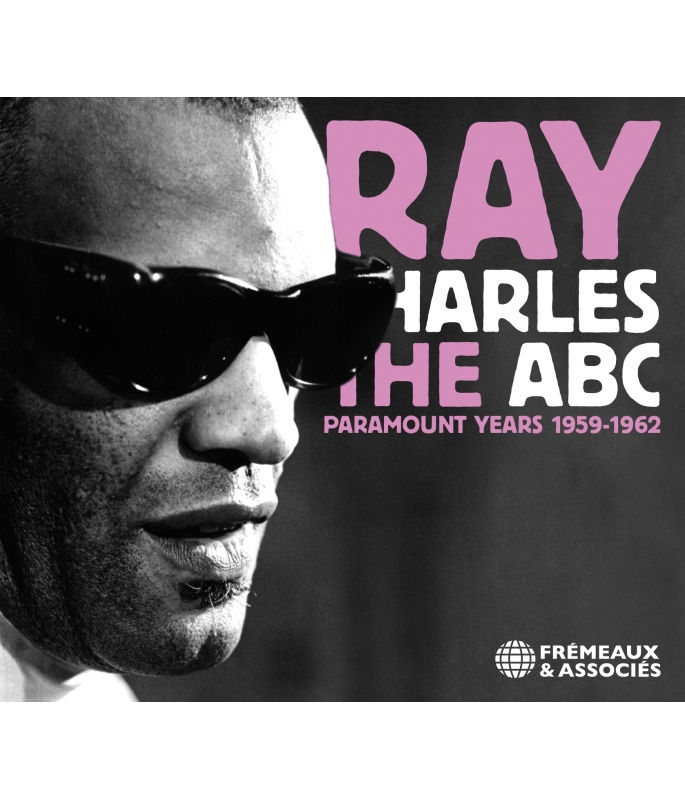
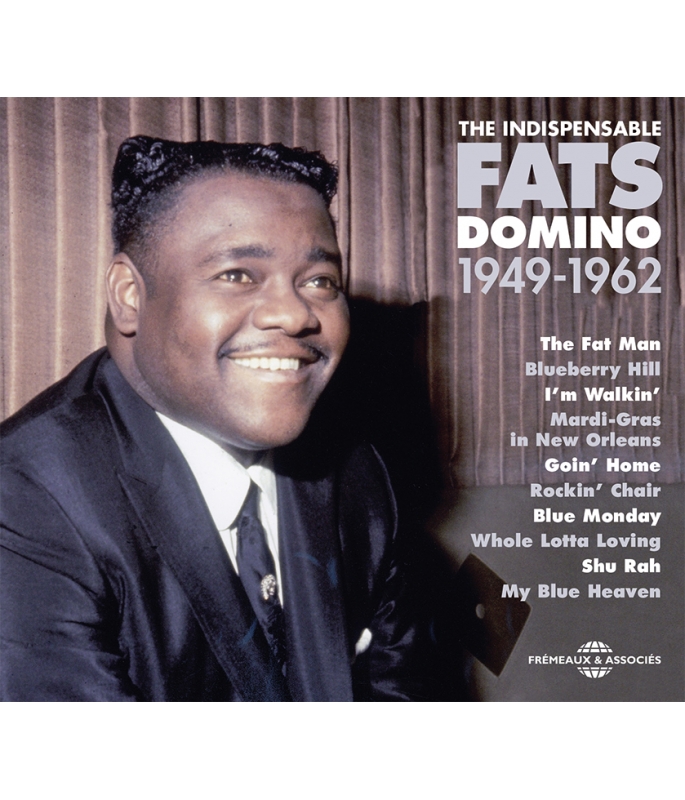
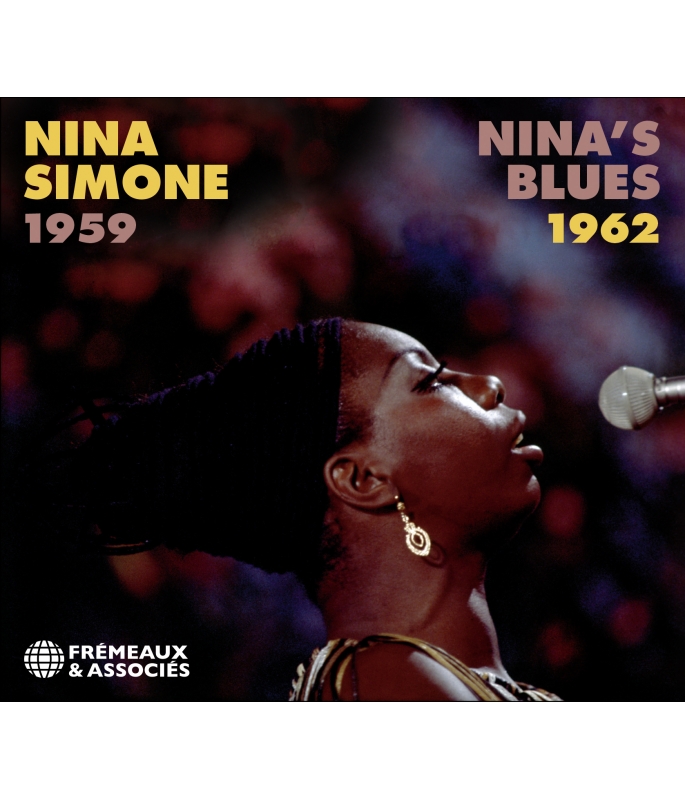

by
Phone
at 01.43.74.90.24
by
to Frémeaux & Associés, 20rue Robert Giraudineau, 94300 Vincennes, France
in
Bookstore or press house
(Frémeaux & Associés distribution)
at my
record store or Fnac
(distribution : Socadisc)

I am a professional
Bookstore, record store, cultural space, stationery-press, museum shop, media library...







